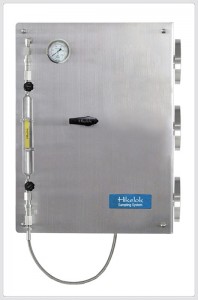To optimize the cost of chemical production process and maintain high quality product output, you need to capture representative process fluids for laboratory analysis on a regular basis. Sampling (also known as spot sampling, field sampling, or rational sampling) helps to verify process conditions and to verify that the product produced meets internal or customer based specifications.
Basic rules of sampling
1: The sample must represent the process state, and the probe should be used to extract the sample from the middle of the process pipe to avoid the phase transition during the sample transportation.
2: The sample must be in time. To shorten the transportation time from the extraction point to the laboratory is helpful to ensure that the process conditions are accurately reflected.
3: The sample must be pure. Avoid tube dead zone upstream of the sample container and allow adequate purging and flushing of the sampling system to minimize the possibility of contamination.
Consider the process fluid in which the gas is dissolved. If the temperature increases and the pressure decrease, the dissolved gas may boil out of the sample. Or consider the gas sample with lower temperature and higher pressure, which may cause the liquid to condense and separate from the sample. In each case, the composition of the sample changes fundamentally, so it can no longer represent the process conditions.
Due to the above reasons, it is necessary to use sample bottles to collect gas or liquefied gas in order to maintain the correct phase and maintain the representativeness of the sample. If the gas is toxic, the cylinder is also effective in protecting the sample technician and the environment from smoke or exhaust emissions.

Post time: Feb-17-2022